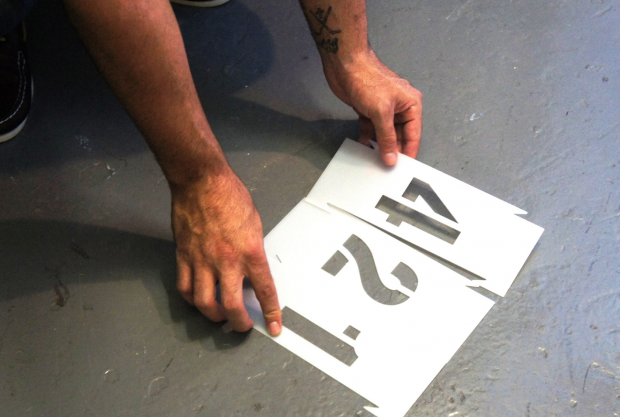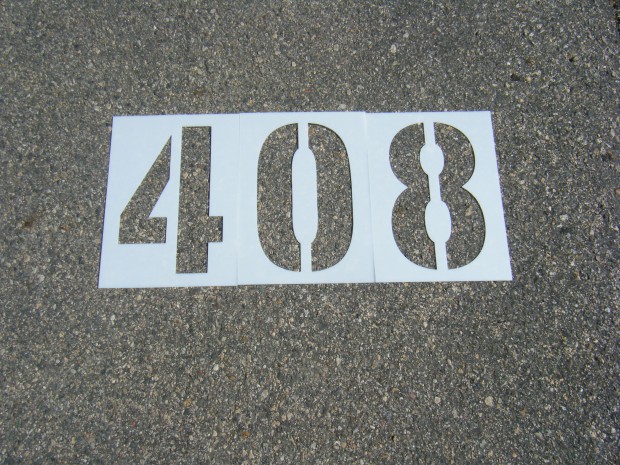How to stencil parking lot identification numbers
While you can probably think of better things to do on a bright spring day than stencil parking lot numbers for your soon-to-open apartment complex or garage, it’s undeniable that sunshine and mild temperatures make such an activity more pleasant. In fact, good weather is a prerequisite because it helps the paint dry more quickly.
What you’ll need:
Once the forecast shows blue skies, you’ll need just three items: stencils, spray paint cans, and painter’s tape. If you worry that your stencils will be crooked, interlocking number and letter stencils are now available. They’ll help you avoid misaligned stencils, and because they’re made of stronger stuff (nonporous plastic), they won’t cause paint to bleed through, like cardboard-based versions that absorb paint.
There are also more efficient paints, like the Stripe Water-Based Marking Paint from Seymour. Lead-free and VOC-compliant, this paint is environmentally friendly and, although water-based, won’t wash away.
Step 1
Decide the numbering or lettering convention you want to follow. Numbering systems typically use three figures, such as 001, 002, and so on. In general, you’ll want to review your stencil kit to be sure you’ve got enough of whatever letter or number is needed for your system or message. For instance, you’ll need two zeros for 001, while elevens will need two number one stencils.
Step 2
Put your stencils on the pavement or other surface in the order needed for your system.
Step 3
Tape each number or letter stencil using painter’s tape, which comes off more easily than masking or packing tape. Interlocking stencils will only need to have their perimeters taped.
Step 4
Spray the paint as necessary.
Step 5
Wait the appropriate amount of time before removing the tape or stencils. You should have an evenly aligned, beautiful stencil as your end product and a system that allows parking permit holders or garage users to easily find their spots.
Of course, parking lots aren’t the only areas in need of marking. Loading docks, traffic areas, bike paths, and athletic fields are prime candidates as well.
For indoor areas, be sure there’s proper ventilation not only for the paint to dry, but also to disperse toxic fumes. Open windows or doors, follow the steps above, and you’ll have a properly stenciled product in no time.
Related Posts
Category: New Products



























